Agile is a methodology for managing highly complex things involving many people. It emphasizes fast adaptation and flexibility, prioritizing others’ needs over pre-defined plans. A lack of agility in a person’s life or with a work team can lead to missed deadlines and opportunities. Personal Agile practices help individuals adapt to new situations, allowing them to react creatively and make decisions quickly. In this article, I will discuss some crucial Agile principles and how Sunsama makes these easy to adopt.
Don’t let the skills that help you navigate your personal life become just another thing you neglect. Instead, cultivate them and make Agile a part of your work lifestyle so that you can apply the same agility to your personal life. Sunsama makes this easy to do.
Let’s review these tips now and see how Sunsama provides support. If you’re already a master of these principles, you may be less productive due to lousy habits ruining your workday.
1. Be Agile in Your Mindset
The agile mindset is a way of thinking focused on continuous improvement and learning. It is a mindset that can be applied to any aspect of life, not just work. The agile mindset has been around for decades, but mainstream business has only recently adopted it. The agile management revolution has been led by the tech industry, which has always had an affinity for this thinking.
The authors of the Agile Manifesto defined the agile mindset as a mindset that is characterized by the following:
- Individuals and interactions over processes and tools
- Working products or services over comprehensive documentation
- Customer collaboration over contract negotiation
- Responding to change over following a plan.
The agile mindset is about continuous improvement, critical thinking, and a willingness to change when needed. The agile mindset is the complete opposite of the slow, bureaucratic approach that was prevalent previously.
The decision to adopt a tool like Sunsama signals a shift in a willingness to change. It acknowledges that you are agile but need a tool to help you stay agile. Sunsama is a tool that uses the Agile process to manage your daily professional and personal tasks.
Check out my article if you’d like to see how Sunsama can help you identify good and bad habits.
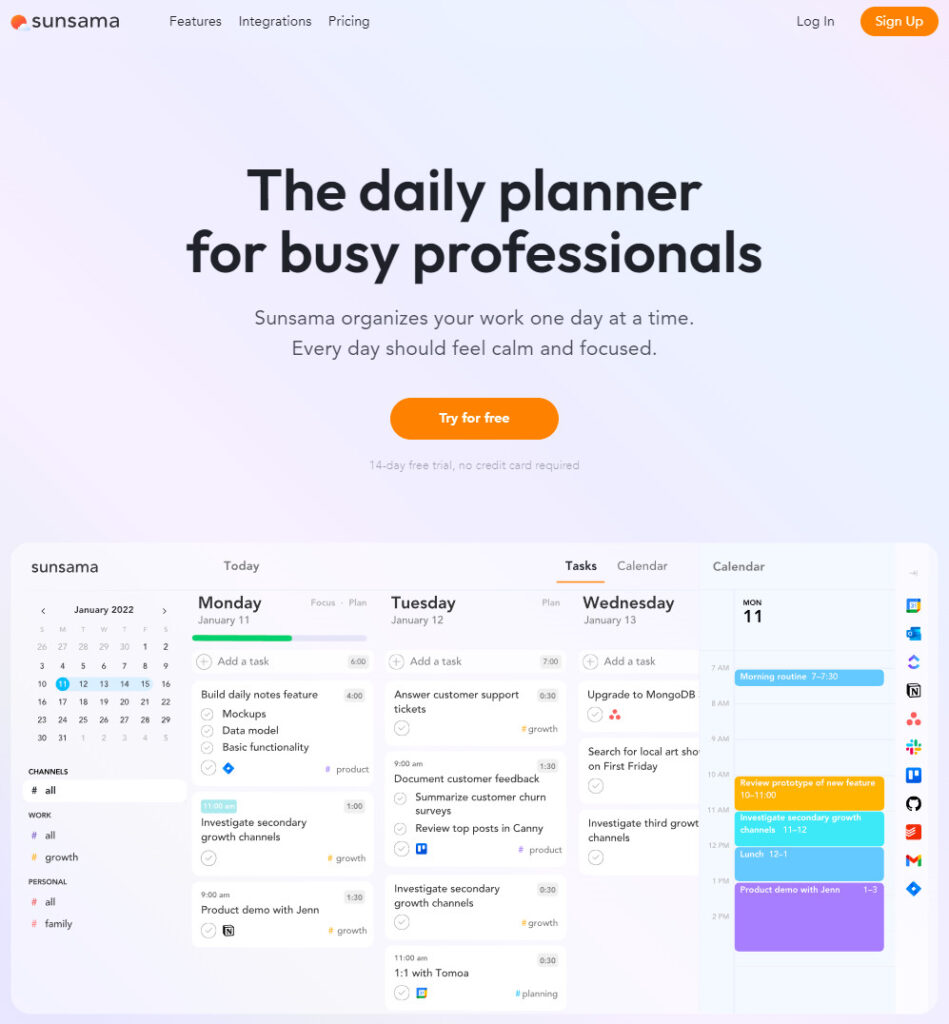
2. Be Agile in Your Personal Planning
The agile methodology is a product development methodology that focuses on delivering value to the customer as soon as possible. The process generally consists of four steps:
1. Sprint Planning
2. Daily Scrums
3. Sprint Review
4. Sprint Retrospective
While the list of steps in agile methodologies indicates work across a team, these concepts can be used by yourself. Leveraging a prioritized backlog for things to do, breaking up projects into manageable pieces for one sprint, limiting your progress to only what you can do at one time, and regularly reflecting are concepts people use in agile processes. These can be taken from that practice and used in your personal life.
Most development sprints are sectioned into two-week sprints, but we can use one-week sprints to stay productive. While we don’t use formal burndown or velocity charts, we can use a weekly planning session to decide what needs to be done in the coming week. We then plan and track those things to do in an app like Sunsama.
Sunsama supports this methodology. In the Sunsama workflow, you start your day by planning it out. Once this is done, your tasks are placed on a calendar board. The tasks for the day are outlined before you. Move them around from the task board onto your google calendar.
As you complete tasks, check them off the board. It isn’t important where the tasks lie on the Today section of the board, and they are there to remind you of the things you planned to do that day. I recommend arranging them from top to bottom to indicate priority. You may not complete all the tasks for the day, but that is perfectly okay. They will be pushed to a later day or moved to the backlog.
Arrange them on your google calendar. Sunsama will sync the status of the meetings automatically.
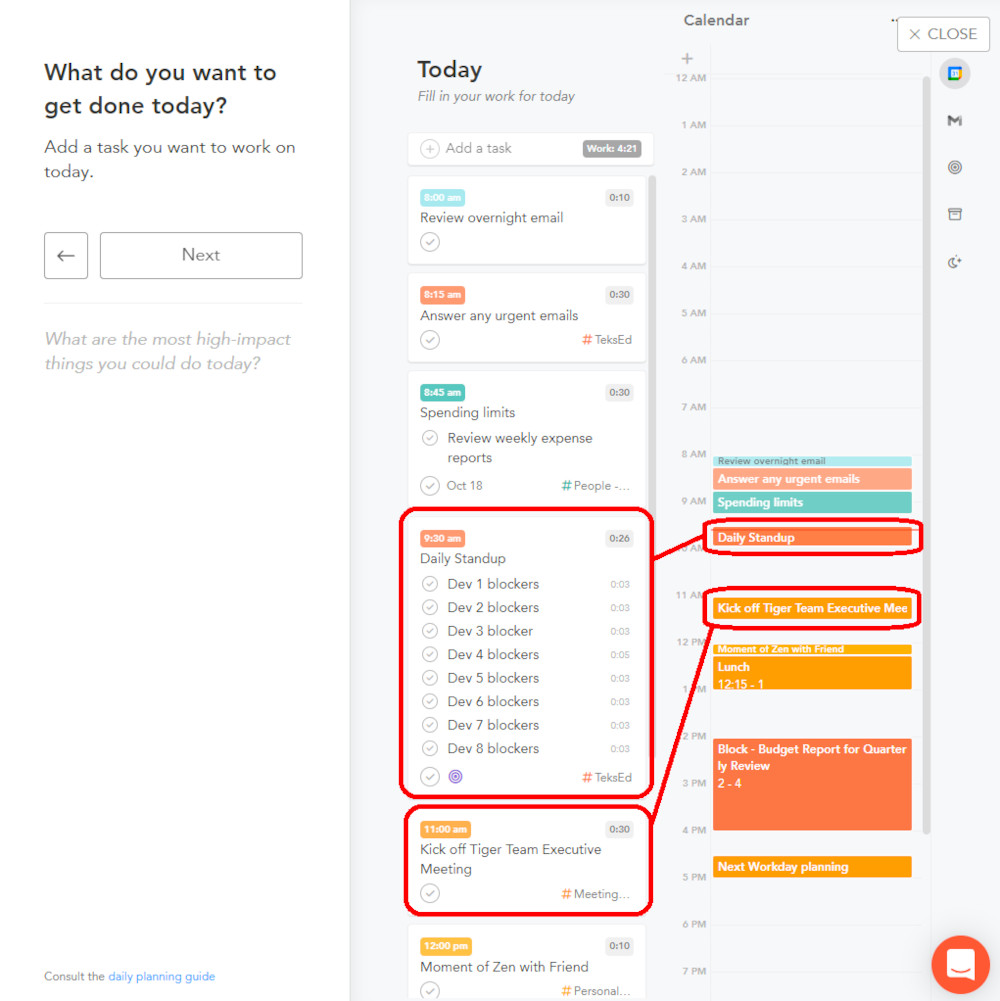
3. Be Agile in Your Execution
Today we live in a world where everything seems to change every few months. It is not only about how we work but also about how we live. And this change is happening at a rapid pace. We must be agile in our execution and follow these rapid changes closely to stay ahead of the curve.
Agile execution means that you must be flexible and adjust your plan as the time and situation require. You shouldn’t stick with something that doesn’t work just because it is the way you’ve always done it or you are too invested in it already. Be open to new possibilities and keep an eye on what’s coming next to take advantage of them when they come up.
How to incorporate this principle in your own life? This principle is best implemented by creating an environment that encourages change. This means you create a space to try new ideas and experiment with your projects. It also means you are willing to react and not be afraid to react when something won’t work out and why, so you and your team can adjust accordingly.
This is another major reason to incorporate Sunsama into your life. The software allows you to plan your day and move things around as needed without losing them. It also helps to remind you of the objectives for the week and the tasks that contribute to those objectives.
In this example, you can see how interconnected my daily standups are to the completion of the sprint and that it is crucial to the completion of the project too. The critical feature of Sunsama is that it allows you to make quick changes to the tasks planned for the day and see how those changes will impact other related things.
Click on a channel in the left panel of the Sunsama dashboard to filter the view to reveal these relationships and search for new ones.
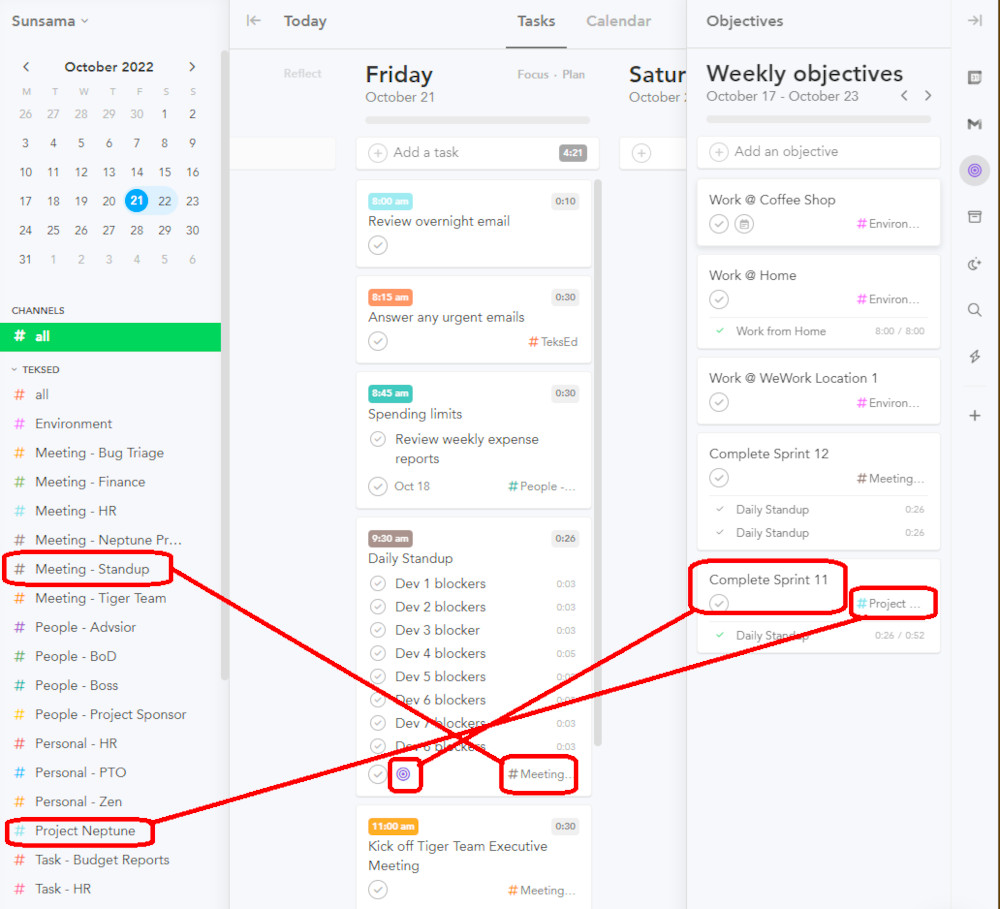
4. Be Agile in Your Feedback Loop
Business stakeholders need to be able to give feedback at any stage of the process, whether early or late. They need to be able to communicate and collaborate so that they can provide input as soon as problems are detected.
A personal feedback loop is a continuous process in which performance is evaluated, and the results are fed back to the source of the feedback so that adjustments can be made to improve performance. In this way, both parties in the loop are constantly learning and improving. Feedback loops provide an ongoing assessment of tasks or activities so that they can make decisions faster and more efficiently.
Feedback loops can come in many forms, but they all allow continuous improvement and growth. Feedback loops can be as simple as a daily standup meeting where team members report what they did yesterday and what they plan to do today or as complex as a customer feedback loop that allows customers to give feedback on products before they are released the public.
Keep this in mind in your personal processes. Feedback can happen on a one-on-one basis or in groups. Meetings are an excellent place to request feedback. Track this in Sunsama
Sunsama follows this approach by exposing your daily tasks on a kanban and presenting you with questions during Sunsamyour daily planning and closeout. It also displays a chart to show what you worked on for the day.
Sunsama also features an analytics page available at any time. This is another excellent form of feedback.
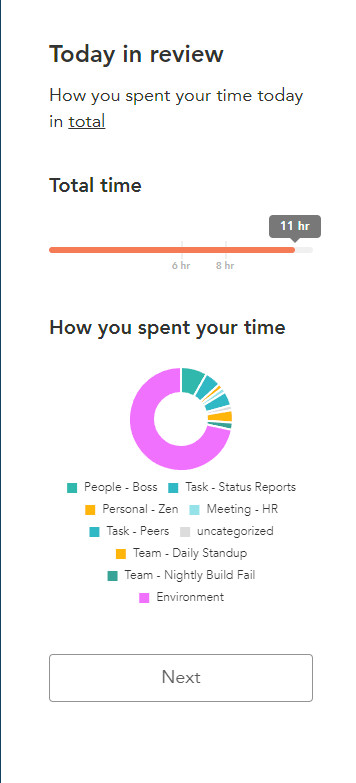
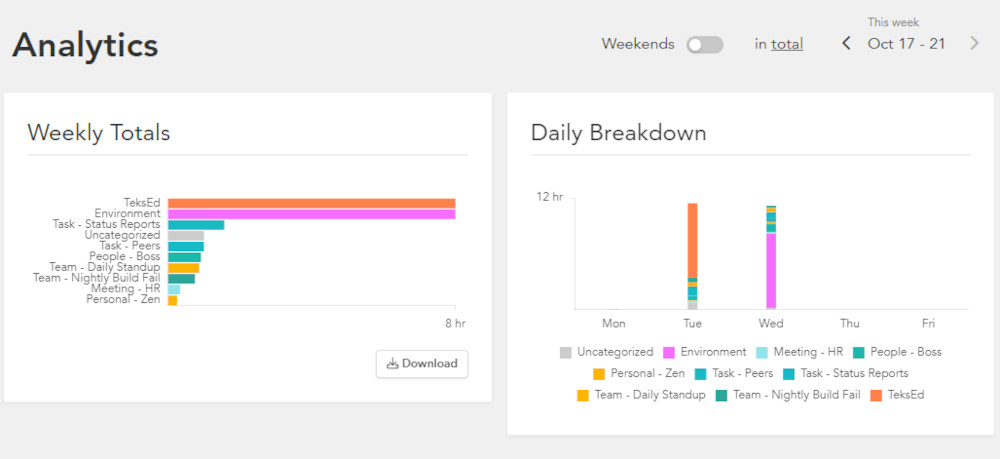
5. Be Agile in Your Communication
Agile communication is about adapting to the situation and having a conversation tailored to the person you are talking to.
Sometimes, it’s easy for managers and leaders to forget that they are not constantly communicating with people who know them well. They can come across as too harsh or too soft, use colloquialisms and unfamiliar terms, or be unable to put things in an easily understood way. As a result, they receive feedback that they don’t understand or hear what they need to hear. In some cases, this can lead to confusion and frustration.
For example, you walk into your manager’s office and say, “I don’t know why you’re mistreating me. I haven’t done anything wrong, and you’re not making any sense.”Your manager says something like this back, “I don’t understand what the problem is either. It sounds like you could be doing a good job.” If your manager could take a step back and see that it might be hard for them to express their thoughts in their manager’s language, they might have responded with something different like this: “I’m sorry, I don’t think I conveyed my thoughts well. It sounds like you have been doing a good job.”
Communication also comes in many forms. Agility relates not only to your communication style but also to your physical communication channels. Use Sunsama to integrate your personal and work emails, Jira tickets, and Slack messages. Sunsama even allows you to post your workday plans on a Slack channel.
With all of its integration, Sunsama offers one place for all your communications.
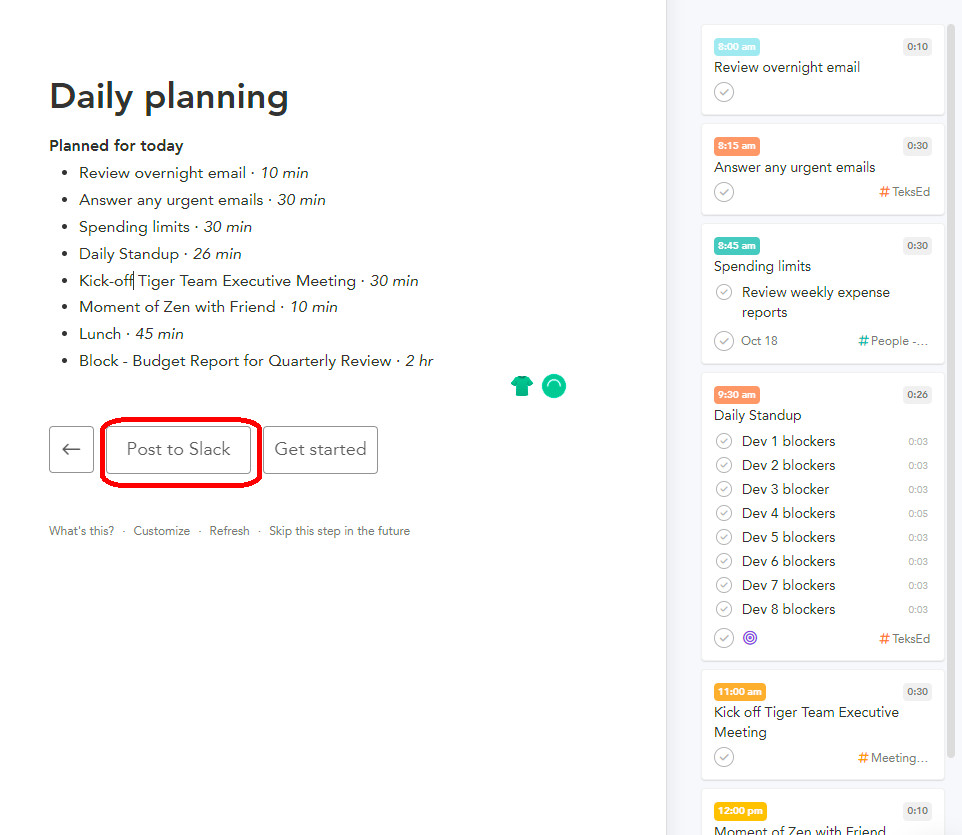
6. Be Agile in Your Transparency
Agile methodology is a set of principles for software development. It is a framework that helps teams to work together and deliver products in short cycles. Agile methodology is based on transparency, collaboration, and feedback.
Transparency is one of the essential principles in agile methodology. Everyone on the team should be aware of what’s happening. Transparency means everyone should be able to see what’s happening with the project at any time. Here are some tips for being more Agile with your transparency
- Be aware of whom you are being transparent with
- Understand when being transparent is appropriate
Sunsama allows you to share your account with others. Also, with such complete integration, changes in your tasks will be reflected in your work tools like the work google calendar, Jira tickets, and Slack channels.
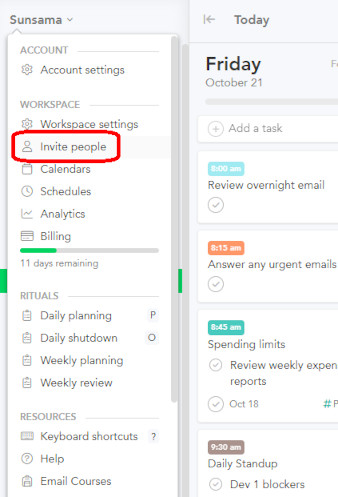
7. Sunsama can Help You Be Agile in Your Management Style
Agile Management rewards the exceptional performance of the team over dominant individuals. The Agile leader who knows how to build high-performance teams and can motivate people, keep them performing at the top of their game, and create a work environment that values collaboration instead of competition will distinguish themselves from their peers.
Identifying those performers is the job of Agile tools like Sunsama. Using Sunsama, keep track of the team’s progress and the objectives they achieve. Acknowledge and reward those teams for their accomplishments.
Leaders in agile environments are always listening and observing. When team members address an issue or leaders identify one often enough, they have gathered input from stakeholders using the agile process to develop solutions. This is a crucial practice you should note and repeat when it works. Listening to your employees or boss is key to being an agile leader.
Leaders need to look at external forces, like changes in the market, the economy, or public health, to find out how they might impact their company. They then refer back to their strategic priorities and test their relevance again. Agile leaders work hard to focus on customer needs and be ready when the workforce changes.
Set tasks in Sunsama to review market conditions and read relevant news. Sunsama has a daily planner that can help professionals integrate this practice into your daily routine.
Conclusion
Consider practicing the agile principles discussed in this article at work and home. As a result, you will be more creative and adaptable and remain flexible as you learn what best fits each situation. If you maintain this mindset in other parts of your life, too, you’ll be able to keep an agile lifestyle no matter the circumstances.



